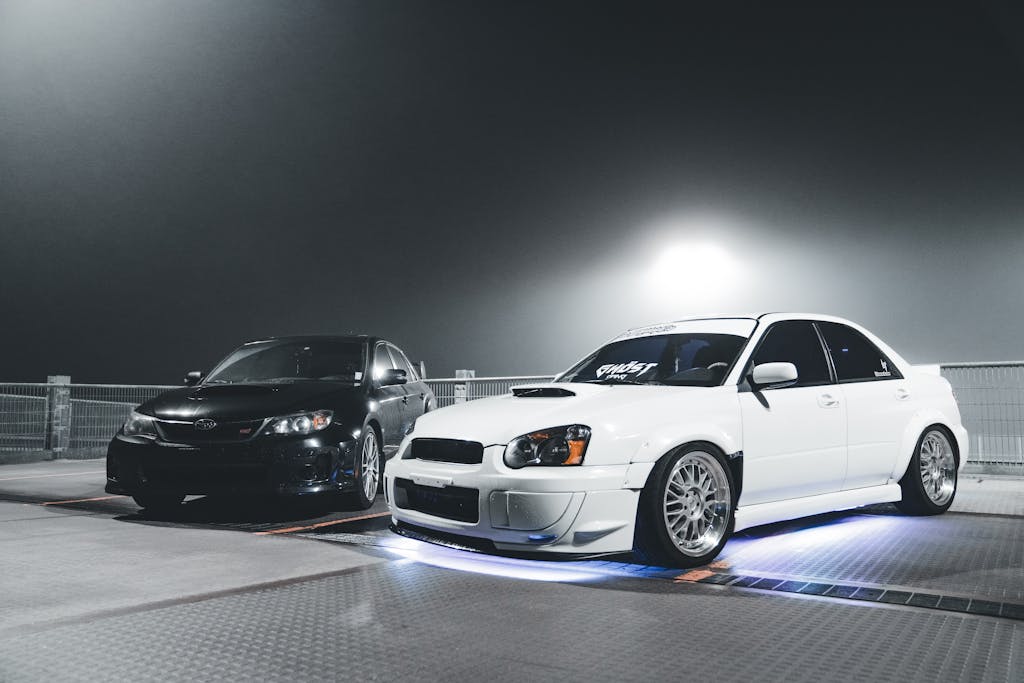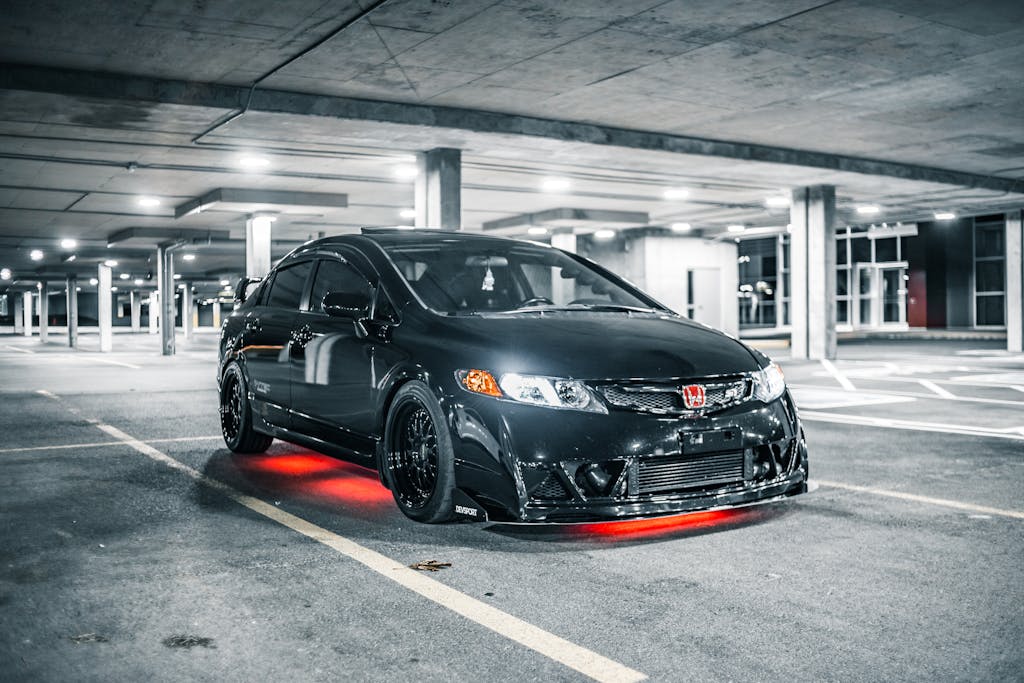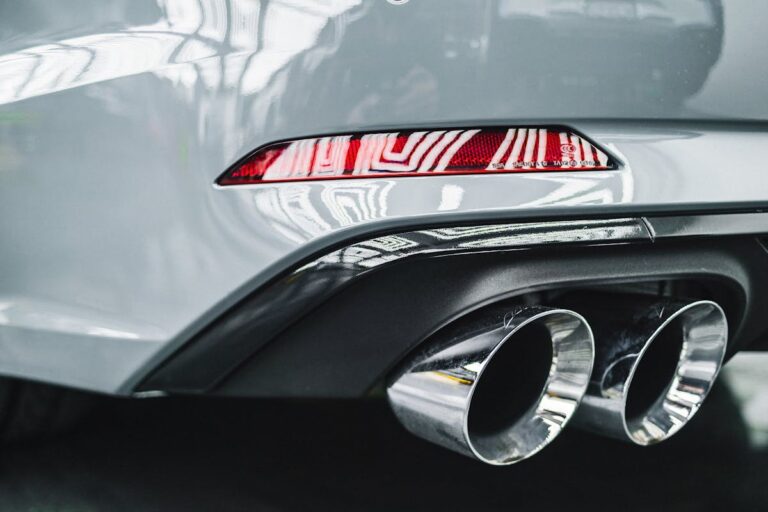Can You Get a Ticket for Underglow in California?
The legal implications of underglow lighting in California are governed by strict adherence to the California Vehicle Code. Unauthorized use, particularly of colors such as blue, red, or green, can result in citations. Legal compliance demands precise adherence to color limitations, typically restricted to white and amber. Understanding these regulations is vital for vehicle owners to avoid penalties. The consequences of non-compliance can be significant, prompting closer scrutiny of underglow installations.
Understanding Underglow Lighting
Underglow lighting, although often perceived as a purely aesthetic modification, holds significant implications within the sphere of vehicular law. This modification’s primary allure lies in its lighting effects, which are designed to augment the visual appeal of a vehicle. However, it also inadvertently contributes to visibility enhancement, which can impact road safety and regulatory compliance. The installation of underglow lighting requires a nuanced understanding of its legal ramifications, as its improper use may lead to conflicting interpretations within different jurisdictions. Legal practitioners must evaluate the extent to which such lighting effects align with statutory mandates, considering factors such as color, intensity, and placement. Consequently, the intersection of aesthetics and functionality demands a rigorous legal analysis to guarantee adherence to vehicular statutes.
California Vehicle Code Overview
The California Vehicle Code imposes specific legal requirements concerning vehicle lighting, including stringent regulations on aftermarket lighting such as underglow. These regulations encompass restrictions on permissible colors, prohibiting hues that could be confused with official emergency vehicles, consequently ensuring public safety and compliance with state standards. Violations of these provisions may result in penalties and fines, reflecting the state’s commitment to maintaining road safety and uniformity.
Legal Lighting Regulations
How does California regulate the use of vehicle lighting to guarantee road safety and compliance? The California Vehicle Code stipulates thorough installation guidelines and specialized lighting requirements to confirm vehicular illumination adheres to safety standards. Pursuant to these regulations, all vehicular lighting must correspond with specific criteria set forth, ensuring uniformity and predictability in illumination practices. For instance, the installation guidelines dictate the permissible placement and orientation of lights, while specialized lighting requirements govern the intensity and type of illumination permitted. Such provisions serve to mitigate distractions and enhance visibility on roadways. Compliance with these regulations is mandatory, and non-adherence may result in citations or penalties. As a result, adherence to these statutory guidelines is imperative for lawful vehicular operation within the state.
Color Restrictions Explained
A myriad of regulations within the California Vehicle Code meticulously delineates the permissible color spectrum for vehicular lighting, ensuring compliance with road safety standards. The code strictly prohibits the use of blue, red, or green lights on non-emergency vehicles to prevent misidentification with official emergency services. Additionally, white and amber are the only colors permitted for forward-facing lights. These stipulations are complemented by light intensity requirements and brightness regulations, which aim to prevent excessive glare or distraction to other road users. Non-compliance with these lighting color restrictions can lead to significant safety hazards. Consequently, adherence to these specifications is imperative, ensuring that vehicles maintain the statutory light intensity and brightness levels as prescribed by California law.
Penalties and Fines
Numerous infractions under the California Vehicle Code result in penalties and fines, particularly concerning vehicular lighting offenses. Unauthorized underglow lighting constitutes a violation of Section 25102, which governs vehicle lighting modifications. Enforcement measures are stringent, as law enforcement agencies are vested with the authority to issue citations for non-compliance. The legal consequences of such infractions include monetary fines, which vary based on jurisdiction and specific circumstances of the offense. Additionally, violators may face further legal ramifications if the lighting modifications are deemed to impact vehicle safety adversely. In severe cases, repeated offenses may lead to increased fines or additional punitive actions. Adherence to the California Vehicle Code is imperative to avoid these legal consequences and maintain vehicular conformity.
Legal Colors for Underglow in California
While the visual appeal of vehicle underglow lighting is undeniable, it is essential to understand the statutory regulations governing its use in California. Pursuant to California Vehicle Code Section 25102, permissible LED underglow color options are strictly limited to non-disruptive hues. Specifically, the code prohibits colors that mimic official vehicle lights or impair visibility. Blue and red underglow, often associated with law enforcement vehicles, are unequivocally proscribed to prevent public misidentification. The effect of underglow on visibility is a paramount concern, with regulations mandating that the emitted light must not cause undue glare or distraction to other road users. Compliance with these stipulations ensures that the aesthetic enhancement does not contravene public safety mandates, consequently averting potential citations.

Placement Restrictions for Underglow Lights
In addition to the statutory limitations on color, California Vehicle Code Section 25102 also imposes specific constraints on the placement of underglow lights on vehicles. These constraints focus on placement visibility to guarantee compliance with safety considerations mandated by law. Underglow lights must not be positioned so as to impair the visibility of standard vehicle lighting systems, such as headlights, taillights, and license plate lights. Additionally, underglow lights should not be installed in a manner that could potentially distract or confuse other road users. The regulation intends to preclude any misinterpretation of vehicle signals, thereby preserving vehicular operational clarity. Maintaining proper placement is essential to upholding adherence to legal safety standards and avoiding potential infractions under the California Vehicle Code.
Exceptions to Underglow Regulations
How do exceptions to underglow regulations manifest within the framework of California’s legal standards? In California, exceptions to underglow light restrictions are delineated through specific criteria regarding proper installation procedures and maintenance requirements. Certain exceptions are permissible when underglow lights meet these stringent standards, guaranteeing they do not pose safety risks or contravene traffic laws. The exceptions include:
- Exemption for emergency vehicles: Vehicles used for emergency purposes may utilize underglow lighting.
- Compliance with proper installation procedures: Correct mounting is vital to avoid interference with standard vehicle operations.
- Adherence to maintenance requirements: Regular inspections certify compliance with legislative mandates.
- Non-distraction assurance: Lights must not distract or mislead other road users.
- Color and intensity restrictions: Specific colors and brightness levels are mandated to prevent confusion with official signals.
Potential Penalties for Non-Compliance
Non-compliance with underglow regulations in California may result in monetary penalties, including fines and fees, which serve as a deterrent against unauthorized modifications. In addition to financial repercussions, violators risk accruing points on their driving record, potentially impacting insurance premiums and driving privileges. Additionally, repeated or egregious infractions could lead to vehicle impoundment, posing significant inconvenience and additional costs to the vehicle owner.
Fines and Fees
Frequently, individuals who fail to adhere to the statutes governing vehicle lighting modifications, such as underglow installations, may incur significant fines and fees. Non-compliance with California Vehicle Code can result in judicially imposed monetary penalties, exacerbating initial installation costs. These fines serve as a deterrent to guarantee compliance requirements are met, thereby maintaining road safety.
Non-compliance may entail:
- Initial fines: Monetary penalties for first-time offenders.
- Escalating fees: Increased fines for repeated violations.
- Court costs: Additional expenses incurred during legal proceedings.
- Administrative fees: Charges related to processing violations.
- Repair orders: Mandated corrections to restore vehicle compliance.
The financial repercussions underscore the necessity of adhering to compliance requirements, ensuring any lighting modifications are within legal boundaries. This prevents the imposition of costly penalties associated with illegal underglow installations.
Points on License
The imposition of points on a driver’s license serves as an additional punitive measure for violations related to unauthorized underglow lighting in California. Points on a license can dramatically affect a motorist’s driving record, potentially leading to increased insurance premiums and the suspension of driving privileges. The state’s legal framework classifies unauthorized underglow as a non-moving violation; however, law enforcement may classify it under broader vehicle code violations that carry points. Accumulating points on a license has long-term driving record implications, as excessive points may trigger a designation as a negligent operator. This classification can result in further administrative penalties, emphasizing the gravity of compliance with vehicle lighting regulations. Consequently, understanding the ramifications of underglow usage is imperative for California drivers.
Vehicle Impoundment Risks
While non-compliance with vehicle lighting regulations in California may seem minor, it carries significant risks, including the possibility of vehicle impoundment. The impoundment procedures are dictated by statutory mandates, which law enforcement must adhere to strictly. The impoundment duration often depends on the severity of the infraction and prior violations. Vehicle impoundment for unauthorized underglow lighting can result in added financial burdens and inconvenience.
Key elements to ponder:
- Impoundment Duration: Typically ranges from a few days to several weeks.
- Financial Implications: Includes towing and storage fees.
- Legal Repercussions: Additional penalties may be imposed.
- Retrieval Procedures: Require compliance with specific legal documentation.
- Repeat Offenses: May lead to escalated penalties and extended impoundment periods.
Understanding these risks is essential for legal compliance.
Tips for Legal Underglow Installation
When considering the installation of underglow lighting on a vehicle in California, compliance with state regulations is paramount to avoid legal repercussions. Adherence to proper installation techniques guarantees both safety and legality. It is critical to affix the lighting system securely to prevent any interference with vehicular operation. The selected underglow must be non-flashing and must not emit red, blue, or any other colors designated for emergency vehicles. Additionally, the lighting should remain concealed from direct sight to maintain an aesthetically pleasing design without causing distractions. The luminescence should not compromise the visibility of standard vehicle lighting. By observing these guidelines, vehicle owners can achieve an underglow installation that is both attractive and compliant with California Vehicle Code, mitigating potential legal infractions.
Common Misconceptions About Underglow Laws
Despite widespread assumptions, many vehicle owners are often misinformed about the legalities surrounding underglow lighting in California. Public perception frequently diverges from statutory reality, leading to confusion. Legislative changes have further complicated matters, leaving room for common misconceptions:
- All underglow lights are illegal: Contrary to belief, certain colors and placements are permissible.
- Underglow can be any color: Specific hues, such as red and blue, are often restricted due to their association with emergency vehicles.
- No enforcement of underglow laws: Authorities actively monitor and enforce regulations to guarantee compliance.
- Changes in laws are minimal: Legislative changes occur, impacting permissible use and installation.
- Federal laws override state laws: California has specific statutes that govern underglow usage, independent of federal regulations.
Understanding these nuances is essential for compliance.
How to Stay Updated on California Vehicle Laws
Staying informed about California vehicle laws, especially those pertaining to underglow lighting, requires meticulous attention to legislative updates and regulatory changes. Individuals must consult the California Department of Motor Vehicles (DMV) website, which serves as the primary repository for such legal updates. In addition, the California Legislative Information portal provides extensive access to statutes and pending bills, ensuring stakeholders remain apprised of imminent regulatory changes. Regular engagement with legal bulletins and subscription to law firm newsletters focusing on vehicular statutes also prove advantageous. Additionally, monitoring official press releases from state law enforcement agencies aids in understanding enforcement trends. By actively pursuing these resources, individuals can adeptly navigate the complexities of underglow legality, consequently mitigating potential infractions and ensuring compliance with prevailing vehicular legislation.
Frequently Asked Questions
Can Underglow Be Used on Motorcycles in California?
In California, motorcycle equipment requirements stipulate adherence to underglow lighting laws. Such lighting must not emit red or blue hues and should not distract or impair visibility, ensuring compliance with state vehicle code provisions governing permissible lighting.
Is Underglow Allowed in Parking Lots or Private Property?
The current inquiry concerns the permissibility of underglow usage within private property parameters and parking lot visibility. Private property regulations may permit underglow absent public roadway restrictions; however, parking lot visibility requirements might necessitate compliance with broader vehicular lighting standards.
Are There Any Specific Underglow Brightness Limits in California?
The current inquiry pertains to whether California has specific ambient lighting requirements or installation guidelines regulating underglow brightness. In legal terms, California Vehicle Code lacks explicit provisions regarding maximum brightness, focusing instead on color and placement restrictions.
Can I Use Underglow During Car Shows or Parades?
Regarding the usage of underglow for car shows or parades, adherence to car show regulations and parade lighting requirements is essential. Legal provisions might allow exceptions; however, compliance with local ordinances and event-specific guidelines remains imperative.
How Often Do Underglow Regulations Change in California?
Underglow regulation updates in California occur sporadically, influenced by legislative sessions and public safety assessments. Enforcement of underglow laws remains consistent, reflecting statutes’ intent to mitigate distractions, ensuring compliance with evolving vehicular lighting standards for roadway safety.




